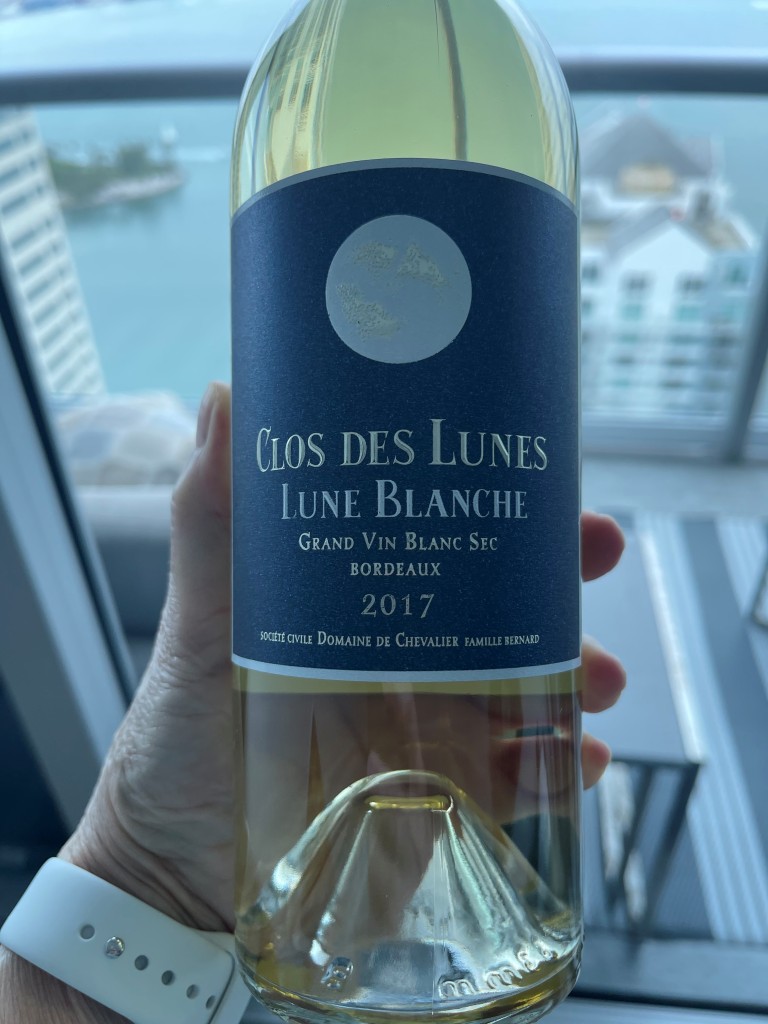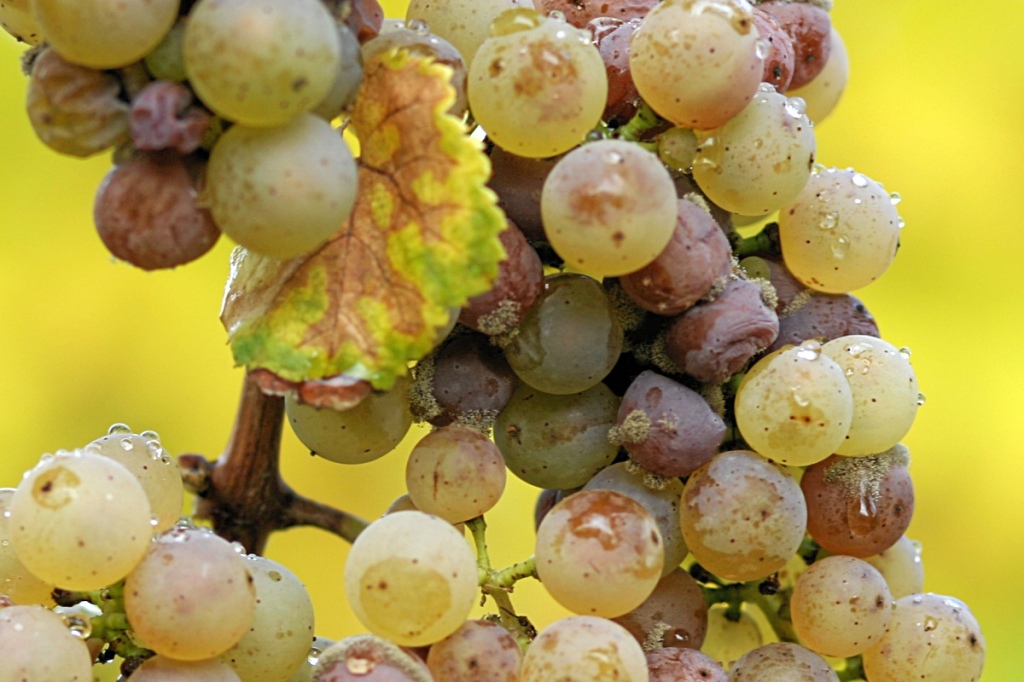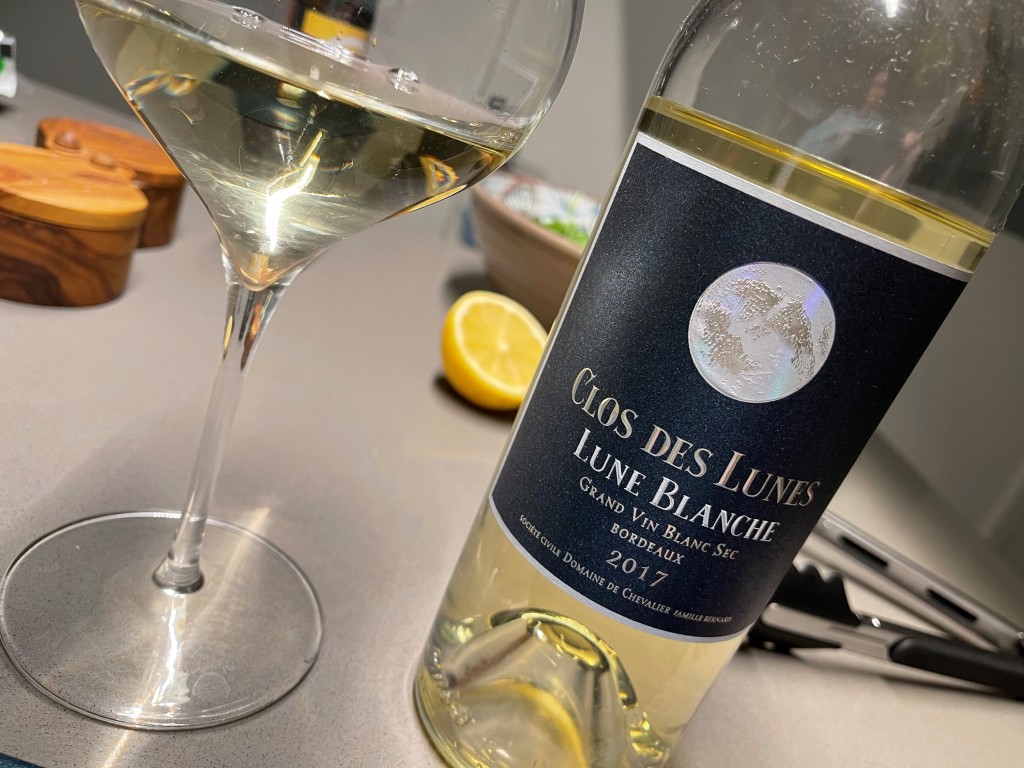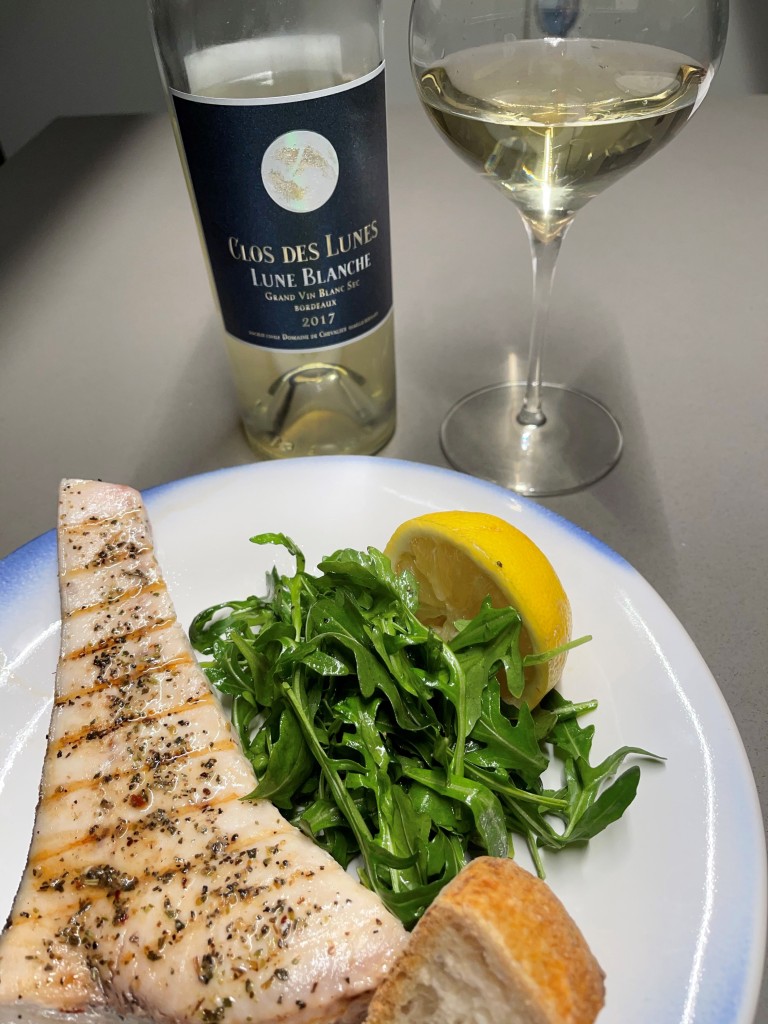
The French Winophiles begin 2021 with an exploration of What’s New in Bordeaux. It’s a great topic, one that encourages us to reconsider our position on one of the world’s best-known wine regions. Thanks to Jeff from FoodWineClick for suggesting the topic and serving as our guide. His invitation post provides much food (and wine?) for thought, and is a great starting point for the conversation.
Speaking of which, our group chat goes live Saturday, January 16th, at 11 am ET. Please join us and share your favorite tips on Bordeaux! You can find us on Twitter using #winophiles. Here’s a preview of what we’ll be talking about:
- Susannah at Avvinare shares “Cru Bourgeois – A Closer Look At Chateau Labadie”
- Wendy at A Day in the Life on the Farm shares “Chateau Haut-Pougnon with Mediterranean Stew”
- Terri at Our Good Life shares “Hearty Seafood Chowder with a Special Bottling from Chateau Tour de Bonnet”
- Allison and Chris at Advinetures shares “Fronsac: Out of the Shadows of Bordeaux”
- Linda at My Full Wine Glass shares “This Francs Côtes de Bordeaux lets the fruit shine through”
- Camilla at Culinary Adventures with Camilla shares “Croissants aux Framboises + Chateau Sabliere Beausejour 2016”
- Gwendolyn at Wine Predator shares “For a Special Evening at Home: Bordeaux’s Sweet, Sparkling, Savory Surprises”
- Lynn at Savor the Harvest shares “Sustainability, Adaptation and Oenotourism Evolve in Bordeaux”
- Lauren at The Swirling Dervish shares “Are Dry Wines the New Sweet Spot for Sauternes?”
- Nicole at Somms Table shares “Faux Fancy Bordeaux”
- Lisa at The Wine Chef shares “Learn About Cru Bourgeois Wines: What’s New and Why You Should be Drinking Them”
- Jeff atFood Wine Click! shares “What’s New? Natural Bordeaux!”
What’s New in Sauternes?
Mention Sauternes to a wine lover and what comes to mind is a glassful of golden elixir; a honeyed, rich wine that takes a miracle of nature to produce. Warm mists rising from the nearby river create a hospitable environment for the development of a fungus called botrytis cinerea, also known as noble rot. This fungus attacks the ripe berries of the grapevine, leaving tiny holes in the skin.
Sounds like a nightmare for the vigneron, right?
Well, in this corner of Bordeaux, the early morning mists are often followed by dry, sunny afternoons. This does two things: it keeps the fungus from spreading unchecked, and it allows the grapes to dry out, thereby concentrating the grape’s sugars, acids, and flavors. Wines made from these grapes will be deeply colored, with high levels of sugar and acidity. They will have hedonistic flavors of honey, candied citrus, and stone fruit.

As you can imagine, there’s no way to predict when these perfect conditions will arise. Each year is unique, leaving the winemaker uncertain of how much wine will be made and therefore, how much can be sold. Add to that the time and expense involved in making these wines: plots must be harvested by hand, with multiple passes through the vineyard. Considering the tiny quantities produced, these wines are a labor of love, and deep pockets help.
Caroline Perromat of Château de Cérons summed it up this way in a 2020 webinar from the Ecole du Vin de Bordeaux:
“These are rare wines that depend on specific conditions. We receive these wines, we don’t produce them. They come from the sky”.
It’s a precarious position for any business, to be sure, even in boom times. But, while those who love golden Bordeaux wines will always seek them out, their market share has shrunk over time, perhaps a result of lower alcohol consumption in general. Or perhaps it’s the assumption that they’re meant to accompany dessert – or be the dessert. (I promise you, these wines can pair with a wide range of foods.)
So, how does a winemaker in Sauternes manage?
Dry Wine Production in Sweet Wine Territory
This topic generates much discussion: are these wines a mere byproduct of sweet winemaking, produced only in years when conditions don’t favor the development of noble rot? Are they meant to serve as an insurance policy in vintages when Mother Nature doesn’t cooperate?
Jean-Jacques Dubourdieu of Château Doisy-Daëne offers another possibility: crafting dry white wines in Sauternes is a way to “guarantee the tradition of sweet wine production.” Olivier Bernard, owner of Clos des Lunes and Château Guiraud agrees, calling these wines “new expressions of one of the wine world’s most hallowed sites.”

Christian Seely, managing director of AXA Millésime adds this:
“It’s not giving up the day job, which is to make great sweet Sauternes. If anything, it enables us to carry on the day job, the pure pursuit of making one of the great sweet wines of the world.”
It’s hard to argue with that logic: dry white wines are significantly less expensive to make than their sweet counterparts, and there is more wine each year to sell. Pierre Dubourdieu, also of Château Doisy-Daëne, sums it up this way:
“We possess outstanding terroir in certain sites for dry whites; essentially there is no good reason why we cannot make both.”
It’s a reality winemakers in other parts of the world are embracing, too. Dry wines are now made in sweet strongholds like the Douro in Portugal, Tokaj in Hungary, and the island of Pantelleria in Italy.
Will Dry Wines Become a Thing in Sauternes?
To some extent this has already occurred. Back in 1948 Château Doisy-Daëne became the first classified growth to make a dry wine. Pockets of limestone soil, quite favorable for growing Sauvignon Blanc, are scattered over Sauternes and neighboring Barsac. Other top Châteaux started to experiment with making dry white wines as well – notably Château d’Yquem, whose Y d’Yquem bottling sells for about $200.
In fact, it’s not unusual for a property to offer three wines in a vintage: a grand vin (sweet, botrytis-influenced wine); a second-label sweet wine (perhaps late-harvest rather than botrytis-affected); and a dry wine. Having more wine to sell, in a range of styles, increases cash flow to the winery. This creates room in the budget for maintining the property; it also subsidizes the high production costs associated with the traditional sweet wines.
The Story of Clos des Lunes
Olivier Bernard purchased Château-Haut Caplane in Sauternes and, almost immediately, began the transition to dry white wine production. His decision came on the heels of the 2012 vintage, one of the worst on record for sweet wine production. Some Châteaux made no wine at all.
At the time, it was highly unusual for a property to convert to 100% dry wine production. Even today, Clos des Lunes is an outlier: most vignerons still make at least one sweet wine and have slowly embraced the idea of adding a dry wine to their portfolios.
Clos de Lunes has vineyard plots in three distinct terroirs, each adding its stamp to the blend:
- Sauternes, with its deep gravel base, makes powerful wine
- Bommes has gravel atop clay and limestone, offering freshness
- Barsac and its alluvial deposits from the Garonne River bring a mineral quality.
The property’s 75 hectares break down to 70% Semillon and 30% Sauvignon Blanc; the average age of the vines is 35 years.

The Wines
Clos des Lunes makes three dry white wines, labeled under the Bordeaux AOC. Lest you think of this appellation as a regional category without any character, Mary Gorman-McAdams, MW, would argue that is not the case. She firmly believes that this appellation includes distinct terroirs farmed by forward-thinking growers intent on producing high-quality wines with a sense of place. And who’s going to argue with Mary?
Close des Lunes Blanche: this wine is intended to be accessible upon release, meaning there’s no need to cellar it. A blend of 70% Semillon and 30% Sauvignon Blanc, it was aged on the fine lees and racked to small vats, where it aged an additional 6 months before bottling.
Clos des Lunes Lune d’Argent: similar in blend to the previous wine, the Argent spends 6 months aging in a mix of French oak barrels (25%) and 50-litre vats (75%).
Clos des Lunes Lune d’Or: this one has a bit more Sauvignon Blanc in the blend (33%) and is vinified partly (33%) in new French oak barrels. The final blend ages in barrel for 15 months before release. It is considered the hallmark wine and is a blend of fruit from the best 15 barrels produced each year.

My Pairing
I had intended to taste all three wines from Clos des Lunes for this article. Only the Blanche reached me in time. As the other two are scheduled to arrive tomorrow, I’ll post my notes on them shortly.
The 2017 Clos des Lunes Blanche was a breath of fresh air: I really enjoyed the juxtaposition of the tart, herbal notes of the Sauvignon Blanc against the softer, round character of the Semillon. On the nose there was citrus (lemon; white grapefruit), thyme and coriander, and fresh cream. On the palate it was the perfect combination of tangy and creamy. Medium+ acidity was tamed by an umami-saline sensation that was quite intriguing. If this is the entry level wine, I can’t wait to taste the other two.
My pairing was simple, but lovely: fresh swordfish steaks sprinkled with salt, pepper, and a dried Sicilian herb mix from our local grocery store. Arugula salad dressed with lemon juice and olive oil, and a fresh baguette rounded out the meal.
I found myself thinking more about white Bordeaux wines as I researched this article and tasted the wine. Why wasn’t it front-of-mind more often? The QPR on these wines is favorable and, for the most part, they’re widely available. And I love the idea that buying more dry wines from producers in Sauternes and other sweet-wine regions may ensure that the rare “wines from the sky” continue to be made.
Thanks to the Winophiles for prompting me to reconsider these wines and encouraging me to explore them further.
Santé!
References:
Dry whites will save sweet Sauternes (thedrinksbusiness.com)
Exploring Dry Wines from Classically Sweet Regions | SevenFifty Daily
Sauternes’ Sweet Dreams Turn Dry | Wine-Searcher News & Features (wine-searcher.com)
Bordeaux’s Hidden Gem: Dry White Wines – Ecole du Vin de Bordeaux
Thank you for such an enlightening article. We, like many, have associated Sauternes with sweet wines not giving much thought to the dry wines produced. Time to step out of our wine comfort zone it seems!
LikeLiked by 2 people
Thanks so much. I was intrigued with the idea after listening to a few webinars from the Bordeaux Wine School last year. As I started digging, I became more interested. Now I need to taste more wines! 🙂
LikeLiked by 1 person
Great post, Lauren! Thnk you!
LikeLiked by 1 person
[…] Lauren at The Swirling Dervish asks Are Dry Wines the New Sweet Spot for Sauternes? […]
LikeLike
Great article! I had a delicious Clos des Lunes on my first trip to Bordeaux in 2017. Loved it and looking forward to trying more!
LikeLiked by 1 person
Thanks Lisa! I’m looking forward to trying their Argent bottling, which has a little oak influence. Still a lot to discover on the topic but, luckily, the research is not unpleasant! 🙂
LikeLike
[…] Lauren at The Swirling Dervish shares “Are Dry Wines the New Sweet Spot for Sauternes?” […]
LikeLike
After reading your article, my reaction is “why not?” Why not make dry wines if you’re growing Sauv Blanc and Semillon in Bordeaux? Seems like a no-brainer!
LikeLiked by 1 person
It seems that the idea is gaining some traction – especially economically. More to come on the topic, I suspect!
LikeLike
I love these wines with a high percentage of Semillon also while Sue prefers those with Sauvignon Blanc’s herbaceousness. It’s a very distinct difference — one that was clear to me and Sue when we were competing in the Loire for Team USA but not to the other teammates so we missed out on those points…
LikeLiked by 1 person
I’m with you! So often SB seems a bit over the top to me; the roundness of the Semillon tones it down and leaves a richer, softer finish.
LikeLiked by 1 person
I really enjoy the premium oak fermented and aged whites from Bordeaux, the Clos des Lunes Lune d’Or sounds nice!
LikeLiked by 1 person
Just received a few bottles of their Argent; can’t wait to try.
LikeLike
I had no idea you could get a dry sauternes. Thanks for this informative article.
LikeLiked by 1 person
This was my first time tasting one, too. Won’t be my last!
LikeLike
Great explanation of the different whites and dessert wines of Bordeaux. And I also like seeing higher percentages of Semillon — I think it adds such nice textur.
LikeLiked by 1 person
*texture*
LikeLike
I don’t much enjoy Sauvignon Blanc on its own; Semillon makes it more palatable for me. And the texture is so lovely!
LikeLike
Great post yet again on dry wines. Very resourceful!
LikeLiked by 1 person